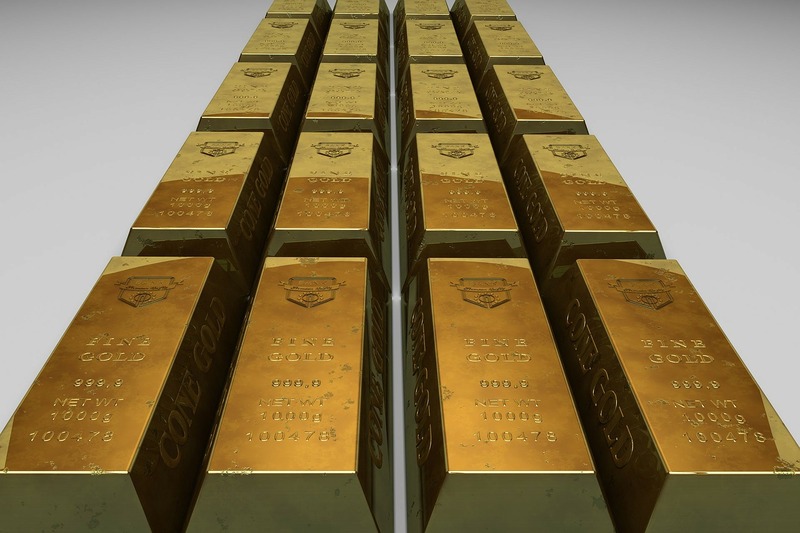
This week we have seen gold prices breach the $2,000/ounce mark for the first time in 12 months as investors are worried about the banking crisis surrounding the United States.

Recently, the stock market has been wrestling with the collapses of several banks such as Silicon Valley Bank, Credit Suisse, Signature, and Silvergate. Silicon Valley Bank experienced a bank run after investors withdrew funds at an accelerated pace which meant the company had to sell bond investments at a loss to support liquidity requirements. Now, economists have identified 186 more banks in the U.S. that may grapple with liquidity challenges if demand for customer withdrawals gains pace.
Typically, gold prices have an inverse relationship with interest rates and equity markets. So, in periods of stock market volatility, investors shift their capital toward safe-haven assets such as gold. In addition, the implosion of the big-ticket banks has led individuals and institutions to invest in asset classes, including fixed-income securities and gold.
Gold prices touched an all-time high of $2,075/ounce back in August 2020, soon after the onset of the COVID-19 pandemic. So let’s see if the yellow metal can reclaim its all-time highs in 2023 and move higher in the next 12 months.
How has gold performed against the S&P 500 index in the last five years
Gold has been viewed as an alternative asset class for several centuries. The precious metal has consistently outpaced inflation over multiple decades and has remained popular as a store of value.
Gold has historically thrived amid chaos and in periods of economic downturns. For instance, gold prices surged from $400/ounce in 2006 to almost $1,000/ounce in 2010 during the financial crisis.
In the last five years, the world economy has been impacted by trade wars, a global pandemic, the Russian invasion of Ukraine, and inflation. Moreover, due to rising interest rates and elevated commodity prices, economists expect most countries to experience a recession in 2023, which may drive gold prices higher.
Due to these macroeconomic issues, gold prices have surged 47%, according to data from Kitco, since March 2018. Comparatively, after adjusting for dividends, the S&P 500 index is up 66% in this period.
In the last 20 years, gold and the S&P 500 index have delivered consistent returns. Since March 2003, gold prices have been up 500% while the S&P 500 has gained 560%.
Gold and interest rates
Gold and bonds also have an inverse relationship. When bond yields rise, investors allocate capital to these interest-bearing assets, resulting in a sell-off across other instruments. While federal banks have hiked interest rates several times in the last 15 months, the possibility of another banking crisis may result in a more dovish monetary policy in the second half of this year.
In an interview with CNBC, Tina Teng from CMC Markets stated, “A sooner Fed pivot on rate hikes will likely cause another gold price surge due to a potential further decline in the U.S. dollar and bond yields.” Teng forecasts gold to trade between $2,500 and $2,600 an ounce in late 2023, indicating an upside potential of over 20%.
Will gold demand soar again this year?
A report from the World Cold Council claimed the demand for gold touched an 11-year high in 2022 due to geopolitical tensions as central banks and retail investors increased exposure to the precious metal.
If we exclude over-the-counter trades, gold demand in 2022 was up 18% yearly at 4,741 tons. In Q4 of 2022, gold demand stood at 1,337 tons, while central banks purchased 1,136 tons of gold in 2022, compared to just 450 tons in 2021.
If recession fears come true, the federal reserve will be compelled to slash interest rates to prevent a stock market rout. These factors will also act as a tailwind for gold in the second half of 2023. Chairman of the Fed, Jerome Powell, confirmed the regulatory body would increase interest rates once more in May after which it will pause the hiking cycle.
Due to these factors, the SPDR Gold Shares ETF (GLD), saw inflows of more than $1.3 billion since the banking crisis. The SPDR Gold Shares is the largest gold ETF in the world and is up almost 10% in the last month.
On the date of publication, Aditya Raghunath did not have (either directly or indirectly) positions in any of the securities mentioned in this article. All information and data in this article is solely for informational purposes. For more information please view the Barchart Disclosure Policy here.






